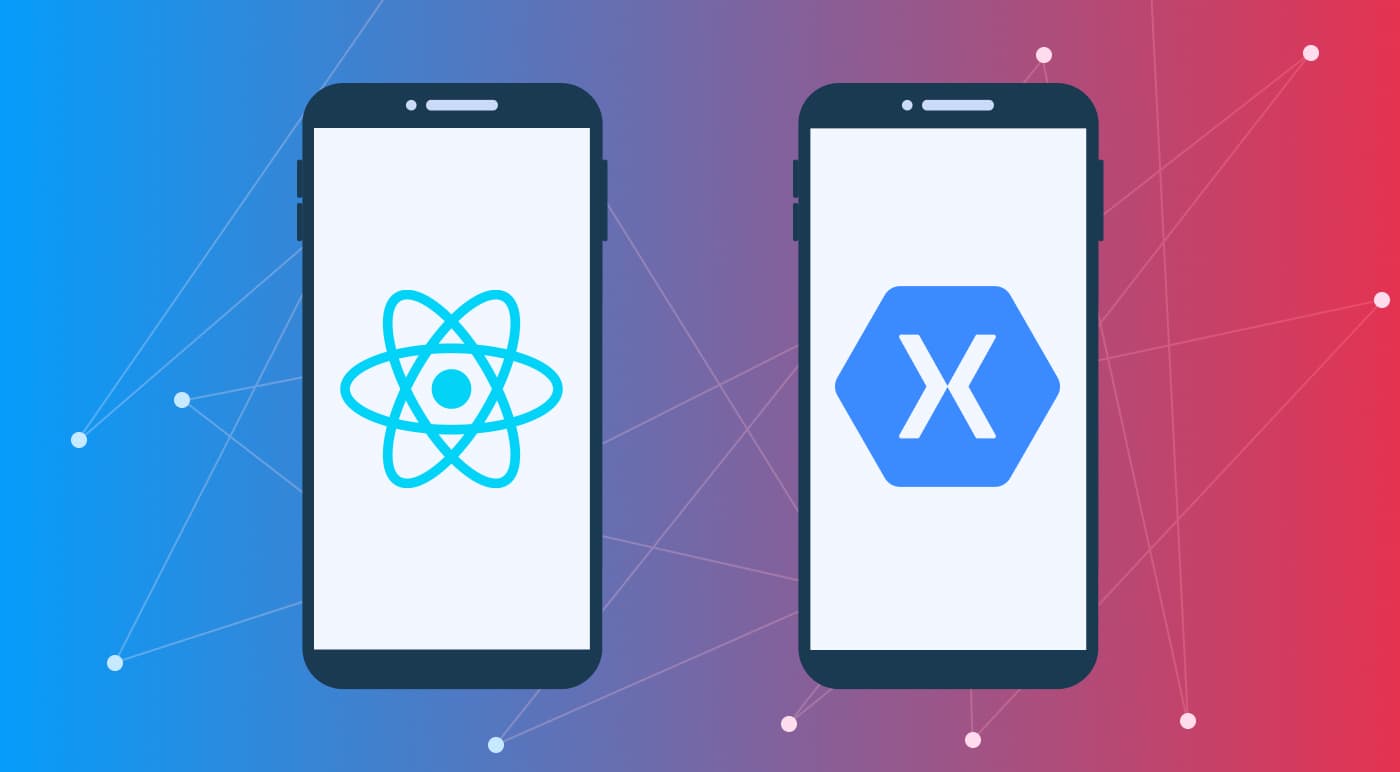React Native and Xamarin: What's Better in 2022?
December 14, 2022
Alex Shubin | Founder & CEO at SDA

What's the distinction between a mobile app and a well-done mobile app? The personal background will tell you the answer. You've probably noticed that games and programs with a pleasant, fast, and convenient interface are more popular. Whereas, that's not all: the speed of development and implementation of new features also affects the success of the mobile app.
From a business point of view, the most profitable way to create mobile apps is cross-platform development. It permits you to develop a program that works on diverse operating systems. Therefore, the reach of users is much higher.
We'll consider the two most prevalent frameworks – React Native and Xamarin. They have some peculiar features that make many developers confused about which one to choose. Let's figure it out together!
What is React Native?
To start with, React Native is an open-source framework used to develop mobile apps. Its main peculiarity is the possibility of devising cross-platform products. It's suitable for both Android and iOS. The user interface in such apps looks attractive.
JScript and React Open Source are used for development. Its first release took place in 2015. The framework is developing very actively, new releases are ready no less often than once every six months, and the community is large and active.
It easily blends with JavaScript, making it one of the simplest and most popular, with a lower barrier to entry for developers. The framework can integrate native device features such as GPS or a camera.
Why use React Native?
Cross-platform development for business is a fantastic way to get a quality mobile app up and running inexpensively. Due to the fact that a single React Native code will allow it to work on several operating systems, the development cost will be significantly lower than for creating individual native solutions.
In addition, a single code base is used, and React Native acts as a connector between Java or Swift elements and the WEB interface. Developers who are well versed in JavaScript and ReactJS will quite quickly and easily master this framework. There are numerous of them, so choosing a specialist for the project won't cause difficulties.
However, you have to be careful because there may be an inexperienced developer who knows the technology superficially, so in this case, it's better to contact a specialist with experience in this field and the creation of similar cases. We're always happy to advise and provide you with the best professionals.
What is Xamarin?
Xamarin is a mobile application development framework designed by Microsoft. It's open-source and entitles developers to create products for diverse operating systems. C# and .Net languages are used in development. Its popularity isn't as high as the previous framework.
Regardless, the developers love it because it permits you to build a quick, functional app, a high-quality, reliable product that works on different OSes. Xamarin provides class libraries that allow you to create elements for various OSes, compilers, and plugins.
Most frameworks are built using JS libraries. Then they're assembled into a so-called container, and the user sees the app. Despite this, lack of access to native UI elements is the main drawback of such frameworks. So to develop a typical button for the iOS operating system, you'll need to draw it yourself.
Why use Xamarin?
Xamarin is a framework that requires a skilled development team, but with the help of this technology, you can create almost any business product. You'll be able to make a flexible app for different operating systems and make changes at once for all OSes and separately.
Do you want an individual management system? Not a problem. A developer will take the base code and make appropriate modifications. When preferring Xamarin or React Native, you should ask yourself the following questions: Do you need custom controls and a rich design? How complex will the app logic be? Will scaling and functionality change be necessary in the future?
Choosing between Xamarin or React Native, the second is preferred because the technology is inexpensive and the time to market is significantly faster. Thanks to the numerous libraries usage, the program is built pretty quickly.

React Native and Xamarin: Key Factors to consider
To choose Xamarin or React Native, you need to compare them. We've selected the best options in development for you to understand which tool to add to the technology stack.
1. Popularity
Popularity isn't a core feature when choosing a technology stack, but it defines a community. And the community helps to solve many tasks and achieve high results in development.
React Native has a large community, the technology is popular and in high demand, and developer surveys show that over 57% of programmers use it. Therefore, you can get answers to questions faster. But Xamarin is supported by Microsoft, so the framework has extensive and rich documentation.
2. Availability
In terms of accessibility, React Native is the clear winner. It's a free and open-source tool that allows you to write code for the Android and iOS platforms. Microsoft Xamarin also has an unpaid version. However, it puffs a limited set of features and resources. To obtain the corporate edition, you need to spend some dollars.
3. Development cost
Developers can also use both frameworks for free. The cost depends on the project complexity and many other factors, but quite a few mobile programmers are working on Xamarin, so finding qualified specialists is harder. Their services will cost more, so the final product price will be higher.
4. Time to market
If you want to get your product to market quickly, use Xamarin. It allows you to create a high-quality program with a simple interface. If the program appearance is significant, and the emphasis is on details, then React Native will cope with this work perfectly. Market entry may take a little longer, but not by much. In fact, it'll be justified.
5. Scalability
Both technologies allow the app to scale in the future. Xamarin makes it a little easier because it's possible to work with the code for each operating system separately and immediately observe the result after compilation. However, it isn't challenging to scale products on React Native.
6. Market share and dominance
Everyone adores React Native for proposing a near-native performance, which is why startups and companies employ it. Some industry giants have adopted RN once for all. For example, Facebook, Tesla, and Skype are several huge names that use it to maintain an immersive online presence.
Xamarin, at the same time, is determined by the preferences of Honeywell, Slack, JetBlue, and more to develop excellent user affairs. It also provides a near-native version for iOS, Android, and Windows apps.\ What's better? Both React Native and Xamarin are preferred by huge brands and work perfectly.
7. Development environment
You know that React Native is adjustable. It permits developers to determine the IDE/text editor they appreciate above all. Typically, Expo is employed for debugging and for building RN applications. The hot reload feature of React Native is a bonus that eliminates the need for a complete app reload after any changes in the code.
In contrast, Xamarin is more influential and friendlier as it tolerates developers writing code for an iPhone app on Windows and compiling it for Mac. Visual Studio is typically used for development, which makes it easy to create mobile, desktop, and web apps.
Apple's XCode is another IDE that Xamarin developers often use to develop apps for Apple TV, iPhone, Apple Watch, and others. In both environments, the procedure is much easier than in React Native. It's where Xamarin definitely takes the lead.
8. Ready-to-use components
To create fast and smart apps, RN suggests a vast field of ready-to-use parts with relevant documentation. From testing tools to type checking, networks, forms, and user interface – there is a solution to meet your primary necessities.
Xamarin elements are shared between the component store and NuGet. Everything is also well here except for the documents, which have been improved enormously. So RN is in the leading position again.
In conclusion, we'd like to add that modern business requires cross-platform development. It's an opportunity to quickly bring a digital product to the market and connect it with the company.
The mobile app allows you to establish communication with customers, improve business processes within the company and automate them. To develop a cross-platform application, you'll need a framework.
The most common is Xamarin or React Native. The first is suitable for creating functional products with high computational capabilities. The second one is developed to build high-quality apps that are comfortable for users to interact with. Each has its advantages and disadvantages.
Choosing a technology stack is a critical step that affects the speed, cost, and success of creating a digital product. We suggest contacting us at SDA to discuss your project. At the meeting, we'll think about which technologies are best to implement your idea and help to build a technology stack. Let's create quality products for business together.
From the initial consultation on the choice of frameworks to development, testing and implementation – we do everything to support our clients to achieve only good results in their business. To get extra information, contact our specialists.



